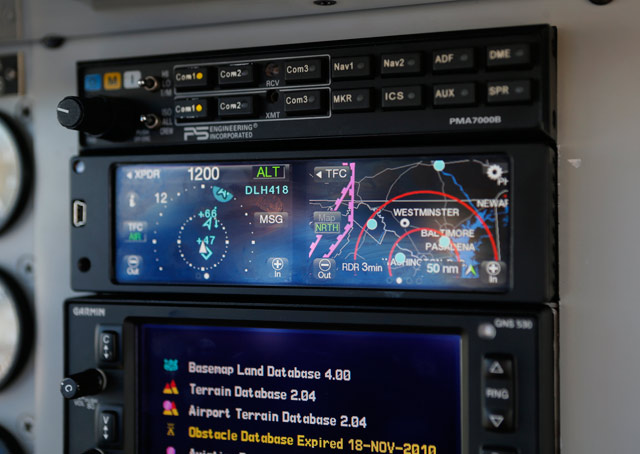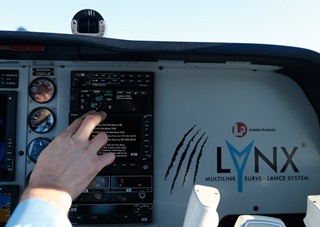L-3 unveils Lynx line of ADS-B products
NGT-9000 a transponder replacement

L-3 Aviation Products has unveiled its Lynx Multilink Surveillance System line of Automatic Dependent Surveillance-Broadcast (ADS-B) products. The company had teased the new product line before announcing it at EAA AirVenture 2014. No product details were revealed, however.
The Lynx line includes five models, ranging from the NGT-1000—an ADS-B Out-only unit that complies with the FAA’s Jan. 1, 2020, mandate—to models that offer the ability to display information on personal electronic devices via Wi-Fi or on installed multifunction displays. The size and form factor of the top-of-the-line NGT-9000, which offers a touch-screen display, makes it a candidate to replace aging Mode A/C transponders; it incorporates a 1090-MHz Mode S Extended Squitter transponder and 1090-MHz ADS-B Out, as well as the ability to receive both 1090-MHz and 978-MHz ADS-B In signals.
“Lynx is unlike anything the marketplace is currently offering,” said Larry Riddle, L-3 Aviation Products vice president of marketing and sales for business, regional, and general aviation.
AOPA has been participating in the FAA's Equip 2020 effort to identify low-cost options, and L-3 has been an active participant in that effort. Depending on the price of the lowest cost option the NGT-1000—L-3’s announcement could be a big step in the right direction to bringing down the cost of equipage and facilitating full GA compliance with the ADS-B Out mandate by Jan. 1, 2020.
 All of the Lynx products have WAAS GPS receivers built in, so a compliant external GPS receiver is not required—although a GPS antenna is needed. The company has not announced pricing information on the entry-level NGT-1000 UAT, which provides an ADS-B Out solution using a 978-MHz universal access transceiver.
All of the Lynx products have WAAS GPS receivers built in, so a compliant external GPS receiver is not required—although a GPS antenna is needed. The company has not announced pricing information on the entry-level NGT-1000 UAT, which provides an ADS-B Out solution using a 978-MHz universal access transceiver.
L-3’s Lynx NGT-2000 UAT, with a manufacturer’s suggested retail price of $3,200 plus antennas, wiring kits, and installation, adds a 978-MHz ADS-B In datalink and Wi-Fi, allowing the display of ADS-B traffic and weather on iPads and Android tablets running WingX Pro or SkyRadar (additional apps are pending). For $3,467, the NGT-2500 also offers the ability to display the ADS-B In data on various MFDs.
When the NGT-1000, -2000, or -2500 is paired with a non-compatible transponder, a CP-2500 control panel is required to set the UAT’s output. The control panel alerts pilots when the legacy transponder’s squawk code does not match the ADS-B transmission, which then can be corrected with the push of a button. The CP-2500 has a suggested retail price of $1,223.
The top-of-the-line NGT-9000, $6,800 plus installation, incorporates a 1090-MHz Extended Squitter transponder and 1090-MHz ADS-B Out, and it receives both 978-MHz and 1090-MHz ADS-B In data. This unit features a touch-screen color display with a simple, intuitive interface. (The NGT-9000+ adds an active traffic system that blends ADS-B traffic data with position information of aircraft equipped with Mode A, C, and S transponders; the NGT-9000D and NGT-9000D+ add antenna diversity—the ability to install ADS-B antennas on the top and bottom of the aircraft, to improve ADS-B signal reception while maneuvering and during ground operations.)
“Typically, at least when I’m flying, once the transponder code is entered there isn’t much to do,” said Todd Scholten, chief pilot for L-3 Avionics Systems. Scholten uses the left side of the touch screen to display traffic.
 To get the most from the NGT-9000, it really needs to be moved up in the avionics stack—the lowly transponder normally is at the bottom. In its Bonanza A36 demonstrator, L-3 has installed it just below the audio panel. Aircraft owners should keep in mind that a rearrangement of the avionics stack is likely to increase the installation cost.
To get the most from the NGT-9000, it really needs to be moved up in the avionics stack—the lowly transponder normally is at the bottom. In its Bonanza A36 demonstrator, L-3 has installed it just below the audio panel. Aircraft owners should keep in mind that a rearrangement of the avionics stack is likely to increase the installation cost.
The touch screen does take a little getting used to, because a bit of pressure is required to register commands—more than is needed for an iPad, for example. It is designed that way to minimize incorrect inputs in turbulent conditions and requires only a few minutes to master.
More information on the product line is available from L-3’s Lynx website.



